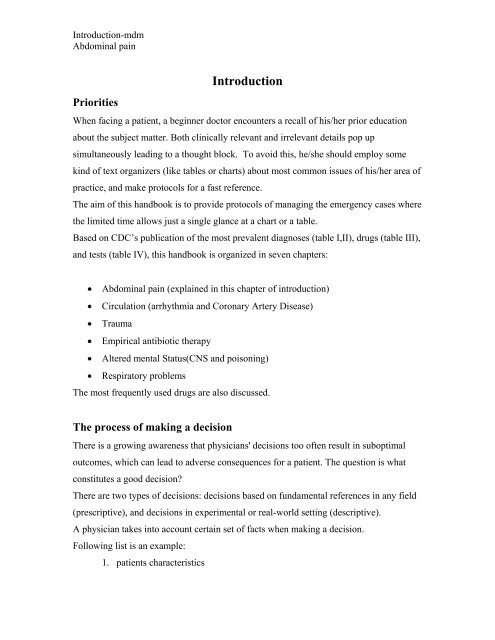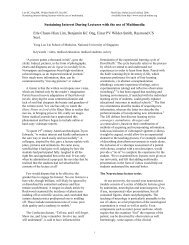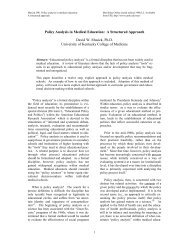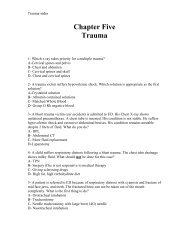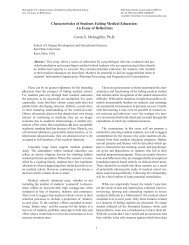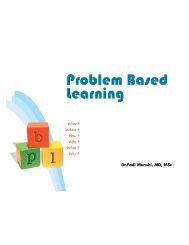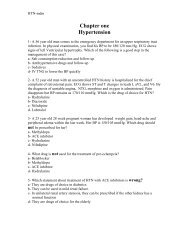Introduction - Medical Education Online
Introduction - Medical Education Online
Introduction - Medical Education Online
You also want an ePaper? Increase the reach of your titles
YUMPU automatically turns print PDFs into web optimized ePapers that Google loves.
<strong>Introduction</strong>-mdm<br />
Abdominal pain<br />
<strong>Introduction</strong><br />
Priorities<br />
When facing a patient, a beginner doctor encounters a recall of his/her prior education<br />
about the subject matter. Both clinically relevant and irrelevant details pop up<br />
simultaneously leading to a thought block. To avoid this, he/she should employ some<br />
kind of text organizers (like tables or charts) about most common issues of his/her area of<br />
practice, and make protocols for a fast reference.<br />
The aim of this handbook is to provide protocols of managing the emergency cases where<br />
the limited time allows just a single glance at a chart or a table.<br />
Based on CDC’s publication of the most prevalent diagnoses (table I,II), drugs (table III),<br />
and tests (table IV), this handbook is organized in seven chapters:<br />
• Abdominal pain (explained in this chapter of introduction)<br />
• Circulation (arrhythmia and Coronary Artery Disease)<br />
• Trauma<br />
• Empirical antibiotic therapy<br />
• Altered mental Status(CNS and poisoning)<br />
• Respiratory problems<br />
The most frequently used drugs are also discussed.<br />
The process of making a decision<br />
There is a growing awareness that physicians' decisions too often result in suboptimal<br />
outcomes, which can lead to adverse consequences for a patient. The question is what<br />
constitutes a good decision?<br />
There are two types of decisions: decisions based on fundamental references in any field<br />
(prescriptive), and decisions in experimental or real-world setting (descriptive).<br />
A physician takes into account certain set of facts when making a decision.<br />
Following list is an example:<br />
1. patients characteristics


